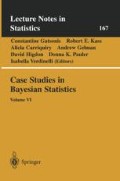Abstract
Western hemlock (Tsuga heterophylla) is a key structural component of old-growth forests in the Pacific Northwest, typically providing a multi-layered canopy and contributing to the diversity of tree ages. Forest managers are looking for ways to promote the establishment of hemlock in the hope of accelerating the development of old growth characteristics. This study examines the relationship between the abundance of coarse woody debris (CWD) and the establishment of western hemlock at two different scales: microsite-level and stand-level within the Oregon Coast Range. We use hierarchical logistic regression models to explore this relationship at the microsite-level, and further, whether this relationship itself depends upon the overall amount of CWD available in the stand. We find a significant association between the amount of CWD and hemlock establishment at the microsite-level, but the association does not seem to depend on the total amount of CWD available in the stand. This suggests that hemlock is not able to use alternative substrates for recruitment when CWD is not available. In turn, these results suggest that CWD can be used to help predict the presence of hemlock saplings in a stand, and that management practices that increase the amount of CWD in forest stands should be considered as potentially beneficial to hemlock establishment.
Access this chapter
Tax calculation will be finalised at checkout
Purchases are for personal use only
Preview
Unable to display preview. Download preview PDF.
References
Franklin, JF., K. Cromack, W. Denison, C. Maser, J. Sedell, F. Swanson, and G. Juday. 1981. Ecological characteristics of old-growth Douglas- fir forests. USD A Forest Service General Technical Report PNW-118.
Franklin, J.F. and T.A. Spies. 1991. Composition, function, and structure of old-growth Douglas-fir forests. In: L.F. Ruggiero, K.B. Aubry, A.B. Carey, M.H. Huff (eds.). Wildlife and vegetation of unmanaged Douglas-fir forests. USDA Forest Service General Technical Report PNW-285. pp. 71–80.
Harmon, M.E. and J.F. Franklin. 1989. Tree seedlings on logs in Picea- Tsuga forests of Oregon and Washington.Ecology70: 48–59.
Harmon, M.E., J.F. Franklin, F.J. Swanson, P. Sollins, S.V. Gregory, J.D. Lattin, N.H. Anderson, S.P. Cline, N.G. Aumen, J.R. Sedell, G.W. Lienkaemper, K. Cromack, and K.W. Cummins. 1986. Ecology of coarse woody debris in temperate ecosystems.Advances in Ecological Research15: 133–302.
Harmon, ME. and J. Sexton. 1996. Guidelines for measurements of woody detritus in forests ecosystems. Publication No. 20. U.S. LTER Network Office: University of Washington, Seattle, USA. 73 pp.
Kass, RE. and AE. Raftery. 1995. Bayes Factors. Journal of the American Statistical Association, 90: pp. 773–795.
McCullagh, P. and J.A. Nelder. 1989.Generalized Linear Models, 2nd edition. Cambridge University Press, Cambridge.
Minore, D. 1972. Germination and early growth of coastal tree species on organic seed beds. USDA Forest Service Research Paper PNW-135, Portland, OR.
Oliver, C.D. and B.C. Larson. 1990.Forest stand dynamics. McGraw-Hill, New York.
Schrader, BA . 1998. Structural development of late successional forests in the Central Oregon Coast Range: abundance, dispersal, and growth of western hemlock (Tsuga heterophyla) regeneration. PhD Thesis. Oregon State University.
Spiegelhalter, DJ., A. Thomas, and NG. Best (1999). WinBUGS Version 1.2 User Manual. MRC Biostatistics Unit.
Spies, T.A. and S.P. Cline. 1988. Coarse woody debris in forests and plan-tations of coastal Oregon. In: C. Maser, R.F. Tarrant, J.M. Trappe, and J.F. Franklin (eds.). From the forests to the sea: A story of fallen trees. USDA Forest Service General Technical Report PNW-229. pp. 5–24.
Spies, T.A., J.F. FranMin, and T.B. Thomas. 1988. Coarse woody debris in Douglas-fir forests of western Oregon and Washington.Ecology69: 1689–1702.
Waring, R.H. and S.W. Running. 1998.Forest Ecosystems: Analysis at Multiple Scales. Academic Press, Inc., San Diego, California. 370 pp.
Editor information
Editors and Affiliations
Rights and permissions
Copyright information
© 2002 Springer Science+Business Media New York
About this paper
Cite this paper
Monleon, V.J., Gitelman, A.I., Gray, A.N. (2002). Multi-scale Relationships Between Coarse Woody Debris and Presence/Absence of Western Hemlock in the Oregon Coast Range. In: Gatsonis, C., et al. Case Studies in Bayesian Statistics. Lecture Notes in Statistics, vol 167. Springer, New York, NY. https://doi.org/10.1007/978-1-4612-2078-7_16
Download citation
DOI: https://doi.org/10.1007/978-1-4612-2078-7_16
Publisher Name: Springer, New York, NY
Print ISBN: 978-0-387-95472-1
Online ISBN: 978-1-4612-2078-7
eBook Packages: Mathematics and StatisticsMathematics and Statistics (R0)

